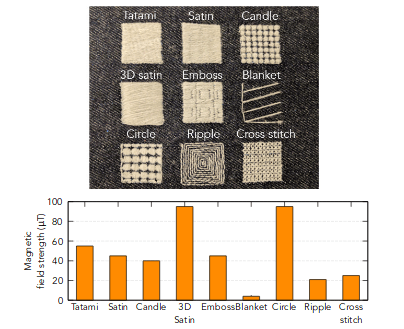We use RFID (Radio Frequency IDentification) technology almost every day. So-called RFID tags or transponders are used to access your office or to pay for purchases by card. Many people simply do not pay...
We use RFID (Radio Frequency IDentification) technology almost every day. So-called RFID tags or transponders are used to access your office or to pay for purchases by card. Many people simply do not pay attention to how widely used this technology is: from agriculture and payment systems to libraries, passports, and the identification of pets.
The main advantage of such tags is the simplicity and ease of use. They receive energy from the information reader through electromagnetic induction and do not need their own power source. The drawbacks of RFID tags are that they can not be bent and, together with the reading system, they are quite expensive.
At the University of Washington, a special ferromagnetic fabric has been created that could replace modern RFID tags. Researchers wove a special ferromagnetic thread into a normal fabric. They experimented and found out which weave gives the most optimal value of the magnetic field.

A magnet is used to record information in the fabric. The value (zero or one) is determined by the polarity of a magnet which is placed in a certain area of the fabric. To read the information, you can even use a regular modern smartphone with a built-in magnetometer. Developers have created an application for Android to recognize the information encoded in the fabric. The application can already recognize simple signals.
The most important advantages of this new development are a much cheaper cost and the ease of operation. According to the calculations of the creators, the cost of one tag will be less than 17 cents. In addition, even special magnetometers are much cheaper than RFID readers (10,000 times in some cases), not to mention the fact that today's smartphones are almost everywhere. Such a clever fabric can be washed and ironed as usual: the exposed information will not be lost.
The developers note that within a week the ferromagnetic fabric loses about 30% of the initial field strength, but the original field strength is completely restored after magnetization reversal. At the same time, full demagnetization does not occur even after several months.
The system is resistant to the effects of external magnetic fields. However it is not considered absolute, but relative changes in the intensity of the magnetic field are considered.
Share this with your friends!






Be the first to comment
Please log in to comment